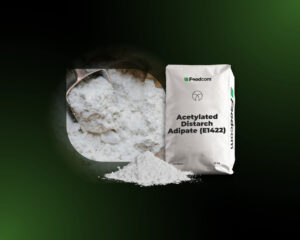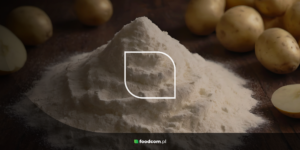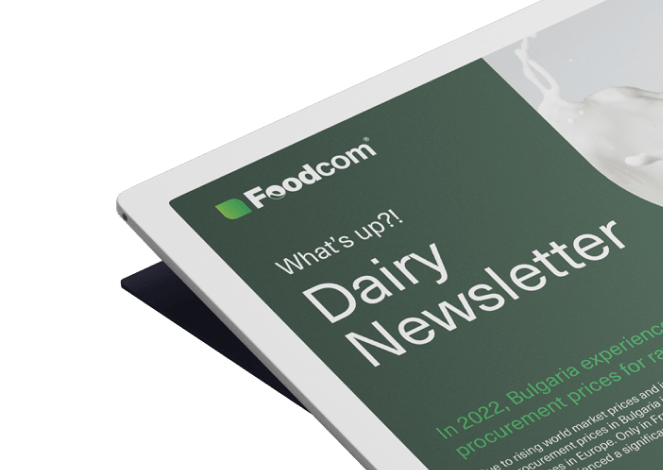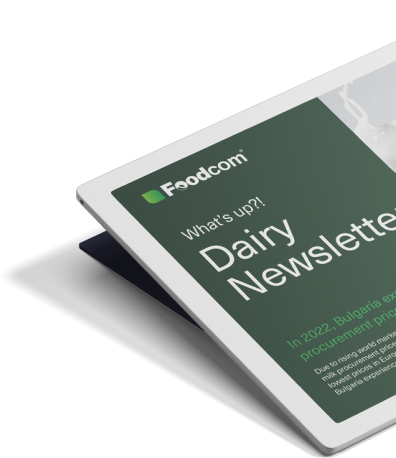- Modified starch is a processed form of natural starch with improved technological properties, widely used in the food, paper, and pharmaceutical industries.
- Chemical, physical, or enzymatic modifications allow for the production of different types of modified starch tailored to specific manufacturing processes.
- In the B2B industry, modified starch is valued for its stability, thickening and gelling properties, and ability to improve product texture. It combines efficiency, safety, and flexibility of use.
Today’s food and chemical industry is focusing on solutions that combine technological efficiency with flexibility of application. One of the raw materials valued in this context is modified starch – a product formed from natural starch, but with improved functional properties. Thanks to various processing methods, modified starch has become an indispensable ingredient in many industries – from food to pharmaceuticals and the production of biodegradable packaging.
Modified starch – what is it?
Starch is one of the oldest and most versatile plant raw materials used in the food industry. It is extracted from maize, potatoes, tapioca or rice. However, the natural form of starch does not always meet the technological requirements of modern production processes, which is why modified starch has been developed – a product with an altered structure, which exhibits better functional properties, improving the production of food, cosmetics, medicines, paper or biodegradable plastics.
The properties of modified starch are mainly:
- better solubility,
- resistance to high temperatures,
- stability over a wide pH range,
- texturising properties (high water binding and gelling capacity),
- ability to prevent clumping of bulk products and undesirable changes in consistency.
Modification processes – how is modified starch produced?
Modification of starch involves changing its natural structure through physical, chemical or enzymatic processes.
The most common methods include:
- chemical modification – carried out by the introduction of functional groups (e.g. acetylation, oxidation, esterification) that change the way starch behaves in water or when exposed to heat;
- physical modification – involves the action of temperature, pressure, humidity or radiation, e.g. by roasting, spray drying or extrusion;
- enzymatic modification – using enzymes that break down or transform starch molecules in a controlled manner.
These treatments result in products with different properties, depending on the need, e.g. more soluble or more resistant to thermal processes.
Types of modified starches and their applications
Modified starches come in many variants – depending on the method used and the desired effect. As food additives, starches are designated by the symbols E1400-E1452.
The types of modified starch include:
- dextrin (E1400) – a product of the partial hydrolysis of starch,
- starch modified with acids (E1401) or alkalis (E1402),
- bleached starch (E1403) and oxidised starch (E1404),
- enzymatically modified starch (E1405),
- substituted starches: phosphated (E1410-E1414), acetylated (E1420-E1423), hydroxypropylated (E1440-1443),
- physically modified starches.
Acetylated starches
This includes acetylated starch (E1420), acetylated distarch adipate (E1422) and acetylated distarch glycerol (E1423). These starches are characterised by increased stability and viscosity, especially under freezing and thawing conditions. They are often used in sauces, desserts or creams, to which they impart a smooth texture and improve flavour and shelf life. They prevent delamination in mayonnaise sauces, dairy products and frozen ready meals.
Phosphate starches
Their main function is to increase a product’s resistance to heat and low pH. In doing so, they have the ability to form stable gels and stable emulsions. They are used in sauces, desserts, dairy products and bakery products. A distinction is made between: monostarch phosphate (E1410), distarch phosphate (E1412) or phosphated distarch phosphate (E1413).
Physically modified starches
These are pregelatinised or pregelatinised starches. They do not require an E-label as they are not a food additive, but only an ingredient with a thickening function. They have the ability to swell in cold water, which is why they are used in instant products, quiches or baby food.

Industrial uses of modified starches
Modified starch is of greatest importance in the food sector, but its use goes much further. It is also used in:
- in the paper industry – as a paper reinforcing and smoothing agent;
- in the pharmaceutical and cosmetic industries, as a filler, carrier for active substances, powders or capsules;
- in the production of biodegradable packaging materials – where it is an environmentally friendly substitute for plastic.
In food, modified starch is used as a thickener, stabiliser, emulsifier and water binding agent. It is mainly found in soups, sauces, desserts, meat preparations, ready meals, frozen foods and baked goods. Thanks to its technological flexibility, it helps to maintain the right consistency, texture and freshness of products even after a long period of storage. An example of a popular variant used in industry is E1422 modified starch, which provides high resistance to temperature and freezing processes.
Trends and the future of the modified starch market
Modified starch is becoming an important raw material in the context of sustainability and the circular economy, so its popularity is growing rapidly. The starch market is driven by both the food industry and the development of biopolymers and ‘clean label’ products. In the future, modified starch can be expected to remain a key raw material in the industry, supporting the development of innovative and more environmentally friendly products.
Modified starch is an example of how a traditional plant raw material can become a pillar of modern industry. Through a variety of modification methods, the properties of starch can be tailored to meet the needs of a wide range of sectors – from food to pharmaceuticals and packaging. Its versatility and safety, as well as the wide range and availability of different types of modification selected to meet technological and cost needs, mean that companies are increasingly interested in this raw material.










